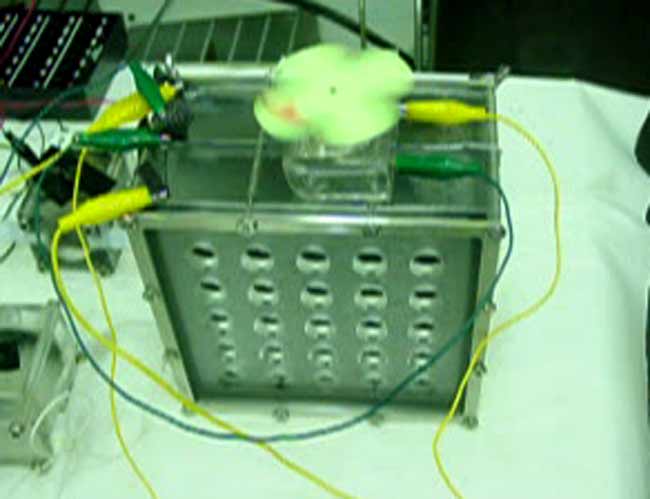Waste Not: Energy from Garbage and Sewage

A hundred years ago, gas was collected from rotting sewage and used to light streetlamps. New technologies hope to update this concept -- tapping garbage was well as human waste -- for an energy-hungry world.
One promising device is called a microbial fuel cell. It makes electricity much like a hydrogen fuel cell, but it runs off wastewater. Sewage-eating bacteria drive a chemical process that generates current and, as a bonus, helps purify the water.
Bruce Logan of Pennsylvania State University and his colleagues have constructed small microbial fuel cells, no bigger than a beer can, that can power various devices, including a small fan.
"The power density is way too low to run a car," Logan admitted. But if it can be scaled up, a large microbial fuel cell would work as a sewage treatment plant.
"If you had 100,000 people and you treat their sewage, you could get up to 2.3 megawatts of continuous power, which is enough to supply electricity for 1,500 homes," Logan said. A megawatt is one million watts.
This energy could also be used to run the treatment plant itself, which would be especially beneficial in developing countries, where electricity is sometimes in short supply. Treatment plants need energy to drive pumps and to bubble oxygen through the wastewater, Logan explained.
A self-sufficient water-treatment device is also something that NASA is interested in. Bruce Rittman of Northwestern University is currently devising a microbial fuel cell that could be used on manned space missions.
Sign up for the Live Science daily newsletter now
Get the world’s most fascinating discoveries delivered straight to your inbox.
"You have to recycle everything up in space," Rittman said. "You want to capture food waste and human waste, as well as recycle water."
A microbial fuel cell has some advantages over the more traditional method, called an anaerobic digester, which collects the methane, or "biogas," that bacteria belch out when they consume organic material in the absence of oxygen. The methane is later burned to turn a turbine generator.
"Instead of going through the intermediate step of combustion, a cell makes the electricity directly," Rittman said.
This direct route means that a microbial fuel cell could potentially extract more energy from a given amount of sewage. It also would avoid the pollution that burning methane produces.
But both Rittman and Logan are quick to add that cells are still early in development, whereas digesters are in use, mostly in agriculture settings where the concentration of organic material is higher than from urban sewers.
There is, however, a project to make useful products and energy from the city of San Francisco's solid organic waste. Engineers at nearby University of California, Davis, have developed a prototype anaerobic digester, which devours lawn clippings and food scraps, instead of sewage.
The prototype should be ready this fall to accept three tons of organic waste per day to make 600 kilowatt-hours of electricity - enough to supply 15 typical California homes. Plans are to funnel this recycled energy into the campus power supply, however.
China uses 'gravitational slingshots' to save 2 satellites that were stuck in the wrong orbit for 123 days
Scientists spot a 'dark nebula' being torn apart by rowdy infant stars — offering clues about our own solar system's past
Mass graves of Black Union soldiers slaughtered by Confederate guerrillas possibly identified in Kentucky










